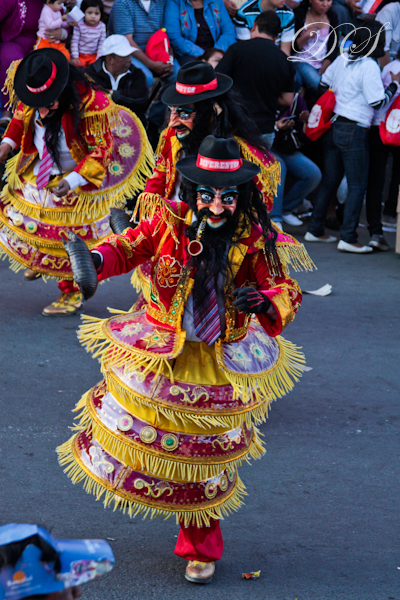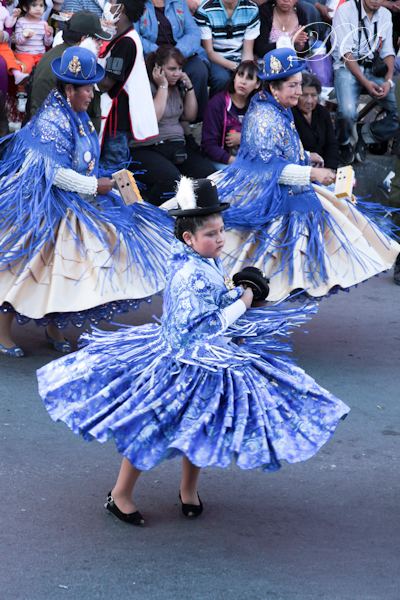24 stycznia w La Paz, oraz innych czesciach kraju, rozpoczyna sie wielka Feria de Alasitas na czesc boga obfitosci Ekeko, przedstawianego jako karlowaty wesoly dziadek w uszastej czepce z alpaki, z mnostwem miniaturowych przedmiotow przyczepionych do swojego poncho.
On January 24th, people of La Paz and other Bolivian cities, start the big celebration of Feria de Alesitas, in honor of the god of abundance Ekeko, who usually is depicted as a small and merry granpa in alpaca hat, with lots of mini objects sticked to his poncho.

fot. spanish.alibaba.com
Alesitas w jezyku Aymara znaczy tyle co ‘kup mnie’, wiec w tym czasie ulice boliwijskich miast i bazarow zapelnione sa straganami z drewnianymi, papierowymi oraz coraz czesciej plastikowymi miniaturami pozywienia, zwierzat gospodarczych, ale rowniez zabawkowych domkow, samochodow, sprzetu elektronicznego oraz, moich ulubionych – falszywych banknotow!
Alesitas in Aymara language means ‘buy me’. No wonder then, that during this period the streets of many Bolivian cities are filled with stalls selling wooden, paper and plastic miniatures like different foods, farm animals, but also toy houses, cars, electronics, and, my favorite – false banknotes! People buy these stuff to make offerings to dwarf Ekeko, which he supossed to return by the end of the year.
Po zakupach, ludzie skladaja miniaturki w ofierze wesolemu bozkowi, ktory pod koniec roku powinien im podarowac przedmioty w pelnym rozmiarze. Studenci, szczegolnie ci bardziej obijajacy sie, moga podarowac Ekeko mini dyplomy uniwersyteckie, liczac, ze po roku otrzymaja od losu te prawdziwe. Spragnieni podrozy moga sprezentowac Ekeko malutkie bilety lotnicze lub figurki samolotow, a ci szukajacy milosci, miniaturowe koguciki lub kury. W zeszlym roku sprzedawano rowniez zabawkowa satelite Tupak Katari, o ktorej, od czasu wystrzelenia w kosmos, sluch zaginal:)
My oprocz wspomnianych falszywych banknotow, ktore podobno przynosza ‘szczescie w kartach’, gromadzimy rowniez plastikowe magnesy na lodowke w postaci owocow i warzyw. Sliczne sa, prawda? Jak na razie, Ekeko sie spisuje, bo swiezych frutas y verduras mamy pod dostatkiem!
Students, especially lazy ones, give Ekeko mini university diploma, hoping that they will graduate at the end of the school term. People who want to travel buy small figurines of planes or fake plane tickets, and those seeking love, tiny chickens or hens (don’t ask me why, I have no idea;) Last year, people were also buying toy satelite of Tupak Katari, but until now no one knows what’s happened to it;)
We, besides these false banknotes, are big fans of plastic fridge magnets in the form of fruits and vegetables. Aren’t they cute? And so far we can’t complain on our Ekeko:)

Historycy do dzis spieraja sie o pochodzenie tradycji Alesitas, a o samym Ekeko krazy taka oto legenda/ To this day historians aren’t sure where exactly tradition of Alesitas has started, but people still remember the legend of Ekeko:
W 1781 roku, rdzenna ludnosc pod wodza Tupaca Katari, zbuntowala sie przeciwko hiszpanskiej okupacji i rozpoczela oblezenie miasta La Paz. Indianka z rodu Aymara, Paulita Tintaya, słuzaca zony owczesnego gubernatora andyjskiego miasta, Doñi Josefy, zakochana była w innym sluzacym, Isidro Choquehuanca, ktory zatrzymal sie w gospodarstwie gubernatora. Isidro podarowal Paulicie amulet – gliana figurke przypominajaca Don Sebastiana de Rojas, swego pana i ojca Doñi Josefy, ktory byl sympatycznym i grubiutkim Hiszpanem.
Po miesiacach oblezenia, mieszkancom La Paz konczla sie woda i zywnosc. Aby nie umzec z glodu, musieli jesc nawet psy i koty. Tylko w kuchni Paulity nigdy nie brakowalo jedzenia, dzieki glinianej figurce umieszczonej na malym oltarzu, ktora w cudowny sposob rozmnazala pokarm. W rzeczywistosci jednak, to Isidro, bedacy w indianskiej armii, sekretnie przynosil pokarmy.
In 1781, the indigenous people commanded by Tupac Katari rebelled against Spanish rule and put siege to the city of La Paz, where Paulita Tintaya, of Aymara blood, lived. She was handmaid to the wife of the governor of La Paz, Doña Josefa de Rojas. The girl was in love with Aymara another servant, Isidro Choquehuanca, who had to stay at the master’s farm. Isidro had given Paulita an amulet – a clay figure in the shape of Don Sebastian de Rojas, their master and father of Doña Josefa, who was a very short, fat, jovial and red-faced Spaniard. After months of siege, people of La Paz were in a desperate situation, as food and water were scarce. They had to eat even cats and dogs so as not to die of starvation. Only in Paulita’s kitchen food was never lacking, thanks to the clay figure she had put in a little altar, which had miraculously provided the housemaid of enough food. In reality, it was Isidro who had given her these provisions, as he was in the indigenous army and therefore able to secretly enter the city.
Gdy Doña Josefa zachorowala z powodu niedozywienia, Paulita postanowila podzielic sie jedzeniem ze swoja pania i gubernatorem. Zapytana, skad ma swieze produkty odpowiedziala, ze dzieki glinianej figurce, ktora nazwała Ekheko, chroniac tym samym swojego lubego. I tak, dzieki Paulicie i jej cudownej figurce, jak wszyscy mysleli, caly dom przetrwal szesciomiesiecze oblezenie miasta, ktore zakonczylo sie wraz z przybyciem posilkow hiszpanskiego wojska. Wdzieczni za ten “cud”, gubernator Segurola i jego malzonka, dali Paulicie i Isidro blogoslawienstwo, zgadzajac sie na ich slub i zatrudniajac oboje w swoim gospodarstwie.
Kiedy wiesc o Ekeko rozeszla sie po miescie, ludzie zaczeli produkowac imitacje glinianej postaci i celebrowac Ekeko jako symbol obfitosci, hojności i szczescia.
When Doña Josefa got ill because of malnutrition, Paulita decided to share her food with her and the governor, who wanted to know where she had gotten it from. She told Governor Segurola that the clay figure, whom she called Ekheko, had the power to make food appear when needed, sto save Isidro.This way, the whole house survived the long six months of siege, that finished with arrival of ne Spanish army regiments.Thankful for this “miracle”, Governor Segurola and his wife gave their blessing to Paulita and Isidro’s wedding, taking them both into their house as servants.
And some time later, people began to use imitations of this clay figure as a symbol of abundance, generosity and happiness.
Zrodla/ Sources: Bolivia Bella.com & eabolivia.com.

Little garden anyone?







